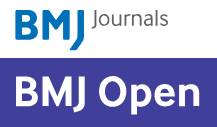Economic inequality in presenting near vision acuity in a middle-aged population: a Blinder-Oaxaca decomposition
Authors
Affiliations
- School of Public Health, Shahroud University of Medical Sciences, Iran.
Abstract
Purpose: To investigate economic inequality and its determinants in near vision, in a middle-aged population.
Methods: In this population-based study, the presenting near vision in the better eye was investigated as the main outcome. If this vision revealed a value ≥1.6 M, the participant was considered to have presenting near vision impairment (PNVI). The effect of variables studied on PNVI was investigated using logistic regression. Economic inequality in PNVI was investigated using the Oaxaca-Blinder decomposition method.
Results: PNVI in the better eye was observed in 18.2% (95% CI 16.8 to 19.6) of participants. The prevalence of PNVI in the high and low economic groups was 11.7% (95% CI 10.3 to 13.0) and 28.5% (95% CI 26.0 to 31.0), respectively. Age and education were observed as the main factors in the explained portion of this gap and were in favour of the high economic group. Gender and eye care utilisation were factors affecting the unexplained portion of this gap and were in favour of the low economic group.
Conclusions: Economic inequality plays a significant role in PNVI, while age and education are among the main factors affecting this gap. The effect caused by any change in these two factors was found to have a greater effect on women with low economic status.
Keywords: Epidemiology; Public health.

